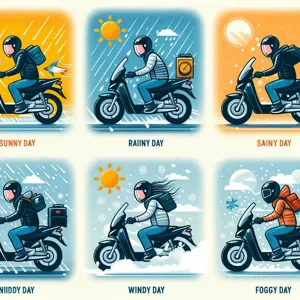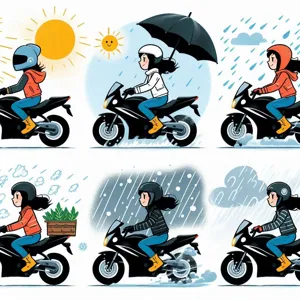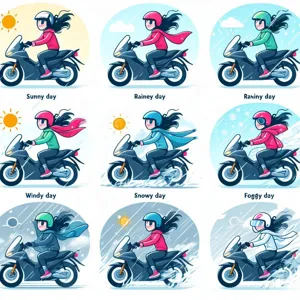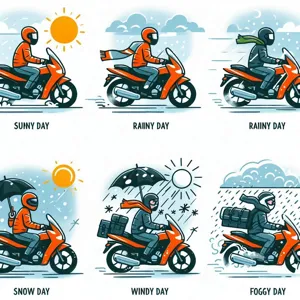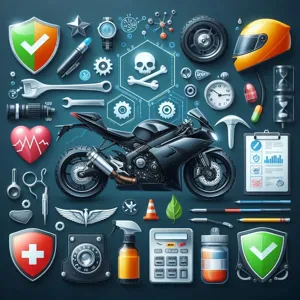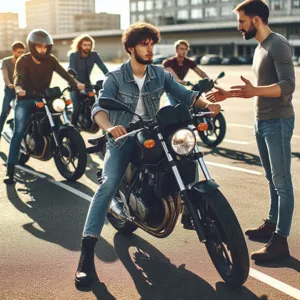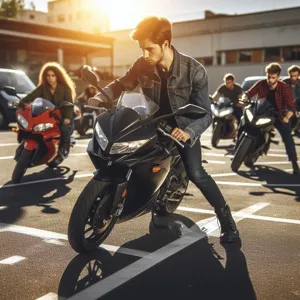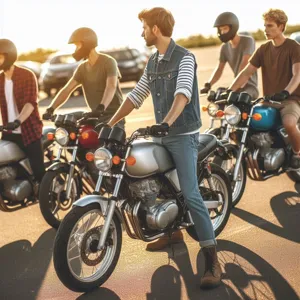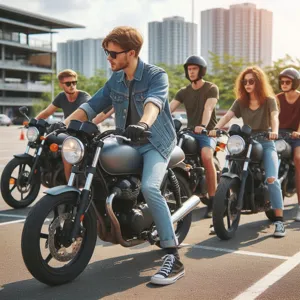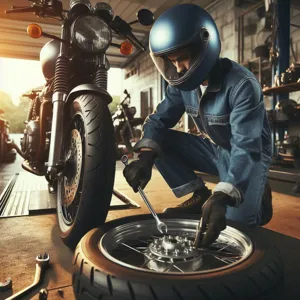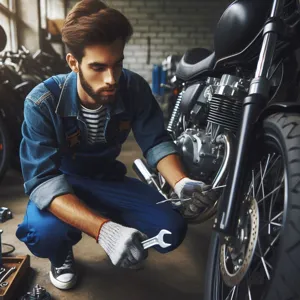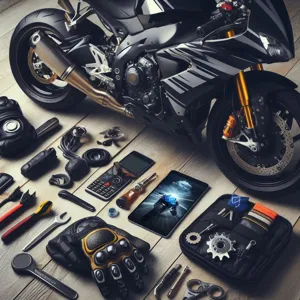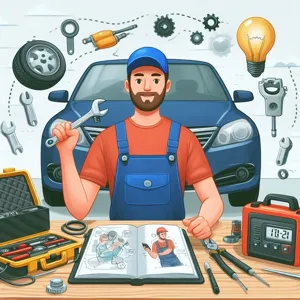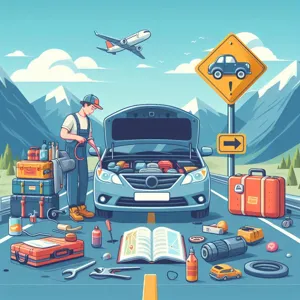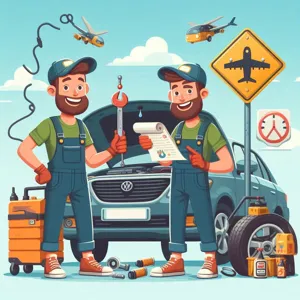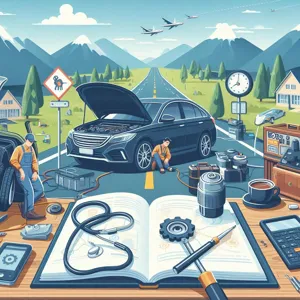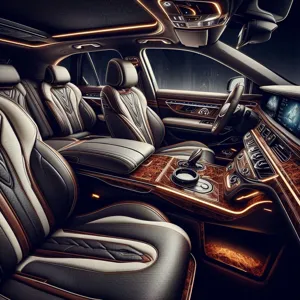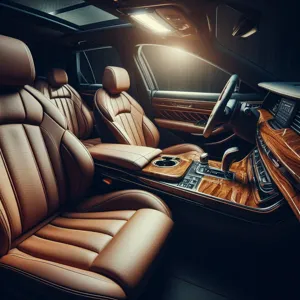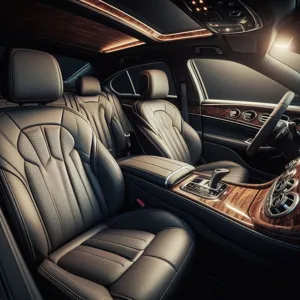For those who seek the thrill of the open road and the wind in their hair, few experiences can compare to riding a motorbike through breathtaking landscapes.
The world is dotted with scenic routes that not only challenge your riding skills but also offer a feast for the eyes, with stunning vistas, winding roads, and captivating natural wonders. Whether you’re a seasoned rider looking for your next adventure or a novice eager to explore, the right route can transform an ordinary ride into an unforgettable journey. In this blog post, we’ll take you on a tour of the top 10 scenic motorbike routes that every enthusiast should experience at least once. From coastal highways that kiss the ocean to mountainous trails that twist through the clouds, these routes promise to ignite your passion for riding and leave you with memories that last a lifetime. So, gear up, rev your engine, and let’s hit the road!
1. Introduction to Scenic Motorbike Routes

If you’re an adventure seeker with a passion for the open road, then scenic motorbike routes are calling your name. Picture this: the thrill of the wind against your face, the rumble of your bike beneath you, and breathtaking landscapes unfolding in every direction. Riding a motorcycle on a picturesque route not only provides an exhilarating sense of freedom but also immerses you in nature’s beauty, allowing you to connect with the environment in a unique way.
Scenic motorbike routes are more than just pathways; they are carefully curated journeys that lead you through some of the most stunning terrains on the planet. From coastal highways kissed by ocean waves to winding mountain passes flanked by towering peaks, these routes are designed to showcase the best that nature has to offer. Whether you’re a seasoned rider or a beginner eager to explore, these roads cater to every level of experience, promising unforgettable moments and stunning vistas at every turn.
In this blog post, we’ll take you on a journey through ten of the most scenic motorbike routes you need to ride today. Each route is a testament to the art of motorcycling, offering unique challenges, picturesque views, and the opportunity to create lasting memories. So gear up, rev your engines, and let’s hit the road to discover the beauty that awaits you around each bend!
2. Route 1: The Pacific Coast Highway, California, USA
The Pacific Coast Highway, often referred to as Highway 1, is a motorcyclist’s dream, offering a breathtaking journey along the stunning California coastline. Spanning approximately 655 miles, this iconic route winds its way from San Diego in the south to the picturesque town of Leggett in the north, boasting some of the most spectacular ocean views in the world.
As you embark on this unforgettable ride, prepare to be captivated by the breathtaking contrast of the rugged cliffs towering over the shimmering Pacific Ocean. The road meanders through charming coastal towns like Carmel-by-the-Sea and Santa Barbara, each with its own unique character and attractions. Don’t miss the chance to stop and explore the quaint shops, savor fresh seafood, or simply take in the stunning vistas that seem to stretch on forever.
One of the highlights of the Pacific Coast Highway is the majestic Big Sur region, where the road hugs the edge of the cliffs, providing dramatic views of the ocean crashing against the rocks below. As you ride through this section, be sure to pull over at iconic spots like McWay Falls, where a waterfall cascades onto a secluded beach, and Bixby Creek Bridge, an architectural marvel that has become a symbol of the Pacific Coast Highway itself.
The weather along the coast can vary, so it’s wise to dress in layers and be prepared for the occasional fog rolling in, which can add a mystical touch to your journey. Whether you’re riding solo or with friends, the Pacific Coast Highway promises an exhilarating experience filled with awe-inspiring scenery, making it a must-ride for any motorbike enthusiast. So fuel up, hit the road, and let the beauty of California’s coastline unfold before you!
3. Route 2: The Great Ocean Road, Australia

Prepare to be captivated by one of the world’s most iconic coastal drives: The Great Ocean Road in Australia. Stretching over 240 kilometers along the southeastern coast, this exhilarating route winds through jaw-dropping landscapes where lush rainforests meet dramatic cliffs and the sparkling blue waters of the Southern Ocean. As you embark on this journey, the scent of salt in the air and the sound of waves crashing against the rocks will invigorate your senses, making every twist and turn feel like a new adventure.
Starting in the charming town of Torquay, known as the surfing capital of Australia, the road quickly reveals its breathtaking beauty. One of the highlights is the scenic stretch through the Otway National Park, where towering eucalyptus trees create a lush canopy overhead. Here, you can stop for a moment to soak in the tranquility and perhaps even spot a koala lounging in the trees.
As you continue your ride, don’t miss the iconic Twelve Apostles, a collection of limestone stacks that rise majestically from the ocean. These natural wonders are best appreciated at sunrise or sunset when the sun casts a magical golden glow upon them, creating a mesmerizing backdrop for your photos. The parking area nearby offers stunning viewpoints that beckon you to take a break and revel in the breathtaking scenery.
Further along, the route takes you through charming coastal towns like Lorne and Apollo Bay, where you can indulge in fresh seafood and enjoy the local hospitality. Each town has its unique charm and character, providing the perfect pit stops for fuel—both for you and your bike.
The Great Ocean Road is more than just a ride; it’s a sensory experience that immerses you in nature’s splendor. With its winding roads, spectacular ocean vistas, and rich biodiversity, this route promises not just a journey but a memory that will linger with you long after the ride is over. So gear up, rev your engine, and hit the road—the Great Ocean Road awaits!
4. Route 3: The Amalfi Coast Drive, Italy
The Amalfi Coast Drive, known as Strada Statale 163, is a motorcyclist’s dream, winding along the breathtaking cliffs of Italy’s southern coast. This iconic route stretches approximately 50 kilometers, offering riders a thrilling blend of sharp turns, steep ascents, and stunning sea views that seem to stretch into infinity. As you embark on this journey, the azure waters of the Tyrrhenian Sea contrast beautifully with the rugged limestone cliffs, creating a postcard-perfect backdrop that is simply irresistible.
Each twist and turn reveals charming coastal villages that are quintessentially Italian. You’ll weave through vibrant towns like Positano, with its pastel-colored buildings cascading down the hillsides, and Amalfi, famous for its stunning cathedral and lively piazzas. Make sure to stop at one of the local trattorias to savor authentic Italian cuisine, perhaps a plate of fresh seafood pasta or a slice of limoncello cheesecake, both of which are specialties of the region.
The ride itself is exhilarating, as the road hugs the cliffs and offers thrilling drops to the rocky shoreline below. Be prepared for hairpin bends that challenge your riding skills while rewarding you with jaw-dropping vistas at every turn. The scent of lemon groves wafts through the air, and the sound of waves crashing against the rocks below adds to the experience, making every moment unforgettable.
As you navigate this scenic route, take time to enjoy the panoramic viewpoints and consider pulling over for a photo op at the famous “Sentiero degli Dei” (Path of the Gods), a hiking trail that offers even more spectacular views. Whether you’re an experienced rider or a novice looking for adventure, the Amalfi Coast Drive provides an unparalleled combination of exhilarating riding and stunning landscapes that will leave you yearning for more. So gear up, hit the road, and let the Amalfi Coast enchant you with its beauty!
5. Route 4: The Ring Road, Iceland

Prepare to embark on an unforgettable journey along Iceland’s Ring Road, a scenic route that encapsulates the raw beauty of this Nordic island. Spanning approximately 1,332 kilometers (about 828 miles), this iconic highway offers motorcyclists an unparalleled adventure through a land of dramatic landscapes, cascading waterfalls, and volcanic vistas.
As you rev up and hit the road, the first thing you’ll notice is the stark contrast of Iceland’s natural elements. Picture yourself cruising through expansive lava fields dotted with moss, flanked by towering mountains that seem to touch the sky. Every twist and turn of the road reveals breathtaking panoramas—glacier-capped peaks in one moment, and serene black sand beaches in the next. Keep your camera handy; the landscapes here are postcard-worthy at every stop.
One of the highlights along the Ring Road is the stunning Seljalandsfoss waterfall. As you approach, the sound of rushing water fills the air, and you can even walk behind the cascade for a truly immersive experience. A bit further along, you’ll encounter the iconic Skógafoss, another majestic waterfall that plunges from a height of 60 meters, often adorned with rainbows on sunny days.
As you ride, be sure to take detours to explore the captivating sights of the South Coast. The small village of Vík, with its striking black sand beaches and dramatic sea stacks, is a must-visit. You can also explore the otherworldly landscapes of Reynisfjara, where the powerful waves of the Atlantic crash against unique basalt columns.
The Ring Road is not just about the striking scenery; it’s also a journey through Icelandic culture and history. Stop by charming towns like Akureyri and Höfn, where you can savor local delicacies and connect with warm, welcoming locals.
With ample opportunities for adventure, from hiking to geothermal bathing, the Ring Road provides the perfect backdrop for a memorable motorbike trip. Whether you’re chasing the midnight sun in summer or witnessing the Northern Lights in winter, every ride on this spectacular route promises an experience that will linger long after you return home. So gear up, hit the road, and let the enchanting landscapes of Iceland whisk you away on the ride of a lifetime!
6. Route 5: The Trollstigen, Norway
Prepare yourself for an exhilarating journey along the iconic Trollstigen, or “Troll’s Path,” one of Norway’s most breathtaking motorbike routes. Nestled in the heart of the fjord region, this winding road snakes its way through the steep mountains, offering riders an unforgettable experience that merges adrenaline with awe-inspiring beauty.
As you approach the Trollstigen, the anticipation builds. The road is flanked by towering peaks, cascading waterfalls, and lush green valleys. With 11 hairpin bends, each turn reveals a new, jaw-dropping panorama that will leave you yearning to pull over and capture the moment. The air is crisp and invigorating, filled with the scent of pine and the distant sound of rushing water from the nearby Stigfossen waterfall, which plunges dramatically down the mountainside.
Riding along this route, you’ll encounter a series of viewpoints strategically placed to provide stunning vistas of the landscape below. The most famous viewpoint, designed by the renowned Norwegian architect Todd Saunders, offers a breathtaking overlook where you can take in the full sweep of the valley and the serpentine road winding through it. Here, you can pause to take pictures, feel the thrill of nature’s grandeur, and connect with fellow riders who share your passion for the open road.
But the experience doesn’t end at the viewpoints. As you navigate the twists and turns, the road challenges your riding skills while rewarding you with moments of pure joy. The sensation of your bike leaning into the curves, combined with the spectacular scenery, creates a sense of freedom that every motorcyclist craves.
As you descend from the heights of Trollstigen, consider taking a detour to explore the nearby fjords, where you can experience the tranquility of the water against the rugged mountains. Whether it’s the thrill of the ride or the serenity of the surroundings, the Trollstigen promises an unforgettable adventure that will keep you coming back for more. So, gear up and get ready to experience one of the most scenic motorbike routes in the world – it’s a ride you won’t want to miss!
7. Route 6: The Cabot Trail, Nova Scotia, Canada

Nestled along the rugged coastline of Nova Scotia, The Cabot Trail is a must-ride for any motorbike enthusiast seeking both adventure and breathtaking scenery. This iconic route stretches approximately 298 kilometers (185 miles) and winds through the stunning landscapes of Cape Breton Highlands National Park, where the mountains meet the sea in a spectacular display of nature’s beauty.
As you embark on this unforgettable journey, prepare to be captivated by the dramatic cliffs that rise steeply from the Atlantic Ocean, offering panoramic views that will leave you in awe. The trail is dotted with charming fishing villages, each brimming with maritime history and local culture. Stop for a moment in the quaint town of Baddeck, where you can indulge in freshly caught seafood or explore the Alexander Graham Bell National Historic Site, celebrating the inventor’s legacy.
The route is particularly famous for its winding roads and steep ascents, making it an exhilarating ride for those who crave a bit of adrenaline. As you navigate the curves, keep an eye out for wildlife, such as moose and bald eagles, which often grace the landscape. The changing seasons also add to the allure, with vibrant autumn foliage painting the hillsides in hues of red, orange, and gold, while summer brings lush greenery and sparkling ocean vistas.
Don’t miss the Cape Breton Highlands, where the trail takes you through lush forests and alongside stunning waterfalls, providing ample opportunities for short hikes and photo ops. As you ride, the salty breeze from the ocean mixes with the scent of pine, creating an invigorating atmosphere that invigorates your spirit.
Whether you’re riding solo or with friends, The Cabot Trail offers a perfect blend of natural beauty, exhilarating roads, and cultural experiences that will make your motorbike adventure truly unforgettable. So gear up, hit the road, and experience the magic of one of Canada’s most scenic routes. This is a journey that will linger in your memory long after the last mile has been conquered.
8. Route 7: The Atlantic Road, Norway
**8. Route 7: The Atlantic Road, Norway**
Often hailed as one of the most breathtaking stretches of road in the world, the Atlantic Road in Norway is a motorcyclist’s dream come true. This iconic route, which spans approximately 8.3 kilometers (5.2 miles), weaves its way through a series of islands and islets, connecting them with a series of stunning bridges that seem to dance over the Atlantic Ocean. As you embark on this exhilarating journey, you’ll find yourself surrounded by dramatic coastal landscapes, with rugged cliffs, crashing waves, and panoramic views that stretch as far as the eye can see.
Riding along the Atlantic Road is not just about the thrill of the ride; it’s an experience that engages all your senses. The salty sea breeze fills the air as you navigate the winding curves, and the sound of the ocean crashing against the rocks creates a natural symphony. Each twist and turn reveals a new vista, from picturesque fishing villages with colorful wooden cabins to expansive views of the fjords that seem to drop directly into the sea.
One of the most awe-inspiring features of this route is the Storseisund Bridge, sometimes referred to as the “Gateway to the Atlantic.” Its graceful curves and striking design make it a favorite spot for photos, and as you ride across, you’ll feel as if you’ve entered a scene from a dream. Keep an eye out for the wildlife, too—seabirds soar above, and if you’re lucky, you might catch a glimpse of seals basking on the rocks below.
The best time to experience the Atlantic Road is during the summer months, when the weather is milder and the days are long. Be prepared for sudden weather changes, though; the region is known for its dramatic shifts, and riding in the rain can add an extra layer of adventure to your journey.
Whether you’re an experienced motorcyclist or a casual rider, the Atlantic Road promises an unforgettable experience that combines the thrill of the ride with the serenity of nature. So gear up, rev that engine, and set off on this unforgettable ride that captures the raw beauty of Norway’s coastline. You won’t just be crossing a road; you’ll be embarking on a journey that will leave you with memories to last a lifetime.
9. Route 8: The Stelvio Pass, Italy
Nestled in the heart of the Italian Alps, the Stelvio Pass stands as one of the most breathtaking motorbike routes in the world. With its dramatic twists and turns, this iconic road climbs to an elevation of over 2,700 meters, offering riders an exhilarating experience that combines adrenaline with awe-inspiring natural beauty.
As you embark on this journey, you’ll be greeted by a stunning panorama of snow-capped peaks, verdant valleys, and rugged mountain landscapes that seem to stretch endlessly. The 48 hairpin bends of the Stelvio Pass are not just a test of skill for motorcyclists; they also provide an opportunity to savor the ever-changing scenery as you ascend. Each turn reveals a new vista, whether it’s lush alpine meadows dotted with wildflowers or the majestic glaciers glistening in the sunlight.
The road itself is a marvel of engineering, dating back to the early 19th century, and it has become a pilgrimage for biking enthusiasts around the globe. Along the way, you’ll encounter quaint mountain villages where you can stop for a refreshing break and enjoy authentic Italian cuisine. Don’t miss out on sampling local specialties like speck and polenta, which will fuel your adventure.
As you navigate the Stelvio Pass, be prepared for varying weather conditions, as the mountains can be unpredictable. Early summer is often the best time to experience this route, as the snow begins to melt, revealing the full splendor of the landscape.
Whether you’re a seasoned rider or a novice looking for a thrilling experience, the Stelvio Pass promises an unforgettable journey that will leave you with lasting memories and an insatiable desire to return. So gear up, rev your engine, and get ready to tackle one of the most scenic and exhilarating motorbike routes that Italy has to offer!
10. Route 9: The Transfagarasan Highway, Romania
The Transfagarasan Highway in Romania, often heralded as one of the greatest driving roads in the world, is a motorcyclist’s dream come true. Stretching over 90 kilometers through the majestic Carpathian Mountains, this route is a breathtaking blend of natural beauty and engineering marvel. As you embark on this exhilarating journey, prepare to be mesmerized by sweeping vistas, dramatic hairpin turns, and an ever-changing landscape that ranges from verdant valleys to rugged peaks.
Starting from the town of Curtea de Argeș, the ride begins with a gentle ascent, quickly escalating into a thrilling climb that takes you to elevations exceeding 2,000 meters. The road twists and turns like a ribbon, offering adrenaline-pumping curves that challenge your riding skills while providing stunning panoramic views at every bend. Picture yourself gliding alongside shimmering mountain lakes, past cascading waterfalls, and through lush forests adorned with vibrant wildflowers.
But it’s not just the ride that captivates; the Transfagarasan is steeped in history and intrigue. It was famously constructed as a strategic military route during the Cold War, and remnants of its storied past can still be seen along the way, including the impressive Poenari Castle—once home to Vlad the Impaler. As you navigate the curves, take a moment to pull over and explore the historical landmarks that dot the landscape.
In addition to its historical significance, the highway also boasts a rich array of wildlife, so keep an eye out for deer, bears, and a variety of bird species that call this rugged terrain home. The best time to ride the Transfagarasan is during the summer months when the road is fully open and the weather is at its finest, allowing you to soak in the full glory of the region.
Whether you’re seeking an adrenaline rush, a connection with nature, or a taste of Romania’s rich history, the Transfagarasan Highway offers an unforgettable experience that will linger in your memory long after the ride is over. Don your helmet, rev your engine, and get ready to embark on one of the most scenic motorbike routes you need to ride today!
11. Route 10: The Beartooth Highway, Montana, USA
The Beartooth Highway is often hailed as one of the most breathtaking motorbike routes in the United States, and for good reason. Stretching over 68 miles through the rugged Beartooth Mountains, this scenic byway takes you on an exhilarating journey that weaves between towering peaks, lush alpine meadows, and crystalline lakes. As you ride, you’ll find yourself ascending to dizzying heights, with the road climbing to an impressive elevation of over 10,900 feet at Beartooth Pass—the highest point on U.S. Highway 212.
The route is renowned for its dramatic vistas, where every twist and turn reveals a new panorama that feels straight out of a postcard. Picture yourself leaning into the curves as you navigate through the winding roads, with the majestic Absaroka and Beartooth mountain ranges framing your ride. In the spring and summer months, vibrant wildflowers dot the landscape, while the fall offers a stunning display of golden aspens against the backdrop of evergreens.
But beyond the views, the Beartooth Highway also offers an invigorating sense of adventure. Keep an eye out for wildlife; it’s not uncommon to spot grazing elk, majestic deer, or even the occasional bear wandering near the roadside. The route encompasses numerous pull-offs and overlooks, providing the perfect opportunities to stop, stretch your legs, and snap photos that will make your friends envious.
Whether you’re a seasoned rider or a newcomer eager to explore, the Beartooth Highway promises an unforgettable experience. Just remember to check the weather before you go, as conditions can change rapidly in the mountains. So gear up, hit the road, and let the Beartooth Highway sweep you away on a scenic adventure you’ll cherish for years to come!
12. Tips for Planning Your Scenic Ride
Planning a scenic ride can transform a simple outing into an unforgettable adventure, and a little preparation goes a long way in ensuring that your journey is both enjoyable and safe. Here are some essential tips to help you craft the perfect itinerary for your next motorbike ride.
**1. Choose the Right Route:** Begin by researching potential routes that offer breathtaking views, interesting landmarks, and enjoyable twists and turns. Websites like RideApart and local motorcycling forums can provide invaluable insights and recommendations from fellow riders. Look for routes that boast scenic overlooks, historic sites, or natural wonders to enhance your experience.
**2. Check the Weather:** Before you hit the road, always check the weather forecast for your chosen route. Weather conditions can change rapidly, especially in mountainous or coastal areas. If rain or storms are predicted, consider adjusting your schedule or selecting an alternative route to ensure your safety.
**3. Plan Your Stops:** Long rides can be exhausting, so plan regular stops to stretch your legs, hydrate, and refuel. Look for charming small towns, roadside diners, or parks along the way where you can rest and take in the scenery. These breaks not only provide a chance to recharge but also allow you to explore hidden gems that you might otherwise miss.
**4. Pack Smart:** Make sure to pack essentials such as water, snacks, a first-aid kit, and any necessary tools for minor repairs. If you’re planning an overnight trip, pack light but include items for comfort, such as a sleeping bag or portable charger. Remember that less is more; keeping your load manageable will enhance your riding experience.
**5. Ride with a Buddy:** If possible, invite a fellow rider to join you on your adventure. Riding in pairs not only adds to the fun but also enhances safety. In the unlikely event of a breakdown or emergency, having someone by your side can make a significant difference.
**6. Familiarize Yourself with Local Laws:** Different regions have varying traffic laws, speed limits, and safety regulations. Educate yourself about the rules of the road in the areas you’ll be riding through to avoid potential fines or legal issues.
**7. Take It Slow:** Finally, remember that the journey is just as important as the destination. Embrace the open road, take in the stunning vistas, and don’t be afraid to deviate from your planned route if you stumble upon a particularly enticing detour. Sometimes the best experiences are found off the beaten path.
With these tips in hand, you’re well-equipped to plan a memorable scenic ride that will fill your soul with adventure and your heart with joy. So gear up, hit the road, and prepare to create lasting memories on two wheels!
13. Essential Gear for a Comfortable Journey
When embarking on an adventure along the open road, having the right gear is crucial for both comfort and safety. The thrill of the ride can quickly fade if you’re not adequately prepared for the elements. Here’s a rundown of essential gear that will enhance your motorcycle journey, ensuring you can focus on the breathtaking landscapes and exhilarating twists and turns ahead.
**1. Helmet:** A high-quality helmet is non-negotiable. Not only does it protect your head in case of an accident, but it also keeps you comfortable by reducing wind noise and buffering against the elements. Choose a model with good ventilation and a visor that offers UV protection, ensuring clear visibility under various lighting conditions.
**2. Riding Jacket:** Invest in a durable riding jacket made from leather or high-quality textile. Look for features such as padding, ventilation, and waterproof capabilities. A jacket will shield you from wind and rain while providing an extra layer of protection against the road.
**3. Gloves:** Proper riding gloves are essential for maintaining grip and control of your bike. They not only protect your hands from the wind and cold but also from potential injuries. Look for gloves with reinforced palms and knuckles, ensuring they are both stylish and functional.
**4. Pants:** Riding pants designed specifically for motorbiking provide better protection than regular jeans. Opt for abrasion-resistant materials with built-in armor at the knees and hips. Many styles offer breathable linings and waterproof options for those unexpected downpours.
**5. Boots:** Footwear is a vital consideration for any rider. Choose sturdy, ankle-high boots that provide support and protection. Look for features like slip-resistant soles and reinforced toes, ensuring your feet stay safe and comfortable during long rides.
**6. Base Layers:** Depending on the weather conditions, consider wearing moisture-wicking base layers. They help regulate your body temperature, keeping you cool in the heat and warm when it’s chilly. Layering is key to adapting to changing climates throughout your journey.
**7. Hydration Pack:** Staying hydrated is vital, especially on long rides. A hydration pack allows you to sip water while you ride, keeping you refreshed without the need to stop frequently. Look for packs that are lightweight and easy to fill.
**8. Motorcycle Backpack:** A reliable motorcycle backpack can be your best friend on the road. Opt for one designed for motorcyclists, featuring straps that secure it tightly to your back and compartments that keep your gear organized.
**9. Tool Kit:** Always have a basic tool kit on hand. Whether it’s a flat tire or a loose bolt, being prepared for minor repairs can save your trip from turning into a major headache.
**10. First Aid Kit:** Safety should always be a priority. A compact first aid kit is essential for addressing any minor injuries that may occur along the way. Be sure to include items like band-aids, antiseptic wipes, and pain relief medication.
With the right gear, you can embark on your scenic motorbike route with confidence and comfort. Each piece plays a vital role in enhancing your experience, allowing you to fully immerse yourself in the beauty of the journey ahead. So gear up, hit the road, and make memories that will last a lifetime!
14. Safety Considerations for Riding on Scenic Routes
While the allure of scenic motorbike routes is undeniable, prioritizing safety should always be at the forefront of your riding experience. These picturesque roads often meander through breathtaking landscapes, but they can also present unique challenges. Here are some essential safety considerations to keep in mind as you embark on your adventure.
**Know Your Route**: Before hitting the road, familiarize yourself with the route you plan to take. Study the maps, understand the terrain, and take note of any potential hazards, such as sharp turns, steep inclines, or areas prone to wildlife crossing. Knowing what to expect can help you prepare mentally and physically for the ride ahead.
**Weather Awareness**: Scenic routes can take you through various climates and altitudes, where weather conditions can change rapidly. Check the forecast before you leave and be prepared for sudden rain, fog, or temperature drops. Carrying appropriate gear, such as waterproof jackets and thermal layers, can make a significant difference in your comfort and safety.
**Wear Proper Gear**: Safety gear is your best friend on the open road. Always wear a DOT-approved helmet, along with protective clothing such as gloves, jackets, and reinforced pants. High-visibility gear can enhance your visibility, especially on winding roads and in low-light conditions. Remember, looking stylish is secondary to staying safe!
**Stay Alert and Focused**: The beauty of scenic routes can be distracting, but it’s crucial to maintain your focus. Keep your eyes on the road and remain vigilant for changes in traffic patterns, road conditions, or sudden obstacles. Avoid riding in a state of fatigue or after consuming alcohol, as both can significantly impair your reaction time and decision-making.
**Ride at Your Own Pace**: Scenic routes can attract a mix of riders, from leisurely tourists to more aggressive riders. It’s essential to ride at a pace that feels comfortable for you, regardless of those around you. If you feel pressured to speed up, consider pulling over safely to let others pass or take a moment to enjoy the scenery.
**Communicate with Fellow Riders**: If you’re riding in a group, establish clear communication signals and maintain a safe distance between bikes. Use hand signals for turns and stops to keep everyone informed. Regular check-ins can help ensure that all riders are safe and enjoying the journey together.
By keeping these safety considerations in mind, you can fully enjoy the freedom and thrill of riding through some of the most stunning landscapes while minimizing risks. So gear up, ride safe, and let the beauty of the open road captivate your spirit!
15. Conclusion: Embrace the Adventure!
As we reach the end of our journey through the top 10 scenic motorbike routes, it’s clear that the open road holds untold treasures for those willing to embrace the adventure. Each route we’ve explored offers not just a chance to ride, but an opportunity to immerse yourself in nature’s grandeur, experience diverse cultures, and forge unforgettable memories. From the serpentine paths of the Pacific Coast Highway to the rugged majesty of the Appalachian Mountains, these routes invite you to escape the ordinary and delve into the extraordinary.
Motorbiking is more than just a mode of transportation; it’s a way to connect with the world around you. The rush of the wind against your face, the roar of the engine beneath you, and the stunning vistas that unfold with each turn create a sense of freedom that is unparalleled. So, whether you’re a seasoned rider or just starting out, don’t hesitate to gear up and hit the road.
Remember, the journey doesn’t always have to be about the destination. Take time to explore quaint towns, taste local cuisines, and soak in the views that can only be experienced from two wheels. Embrace the unexpected—there’s always something new waiting just around the bend. So, grab your helmet, plan your route, and set off on an adventure that will not only satisfy your wanderlust but also ignite your spirit of exploration. The world is vast, and the open road is calling. Are you ready to answer?
As we wrap up our exploration of the top 10 scenic motorbike routes you need to ride today, we hope you feel inspired to hit the open road and embrace the thrill of adventure. Each of these routes offers its own unique blend of breathtaking landscapes, exhilarating twists and turns, and unforgettable experiences that will leave you with memories to cherish for a lifetime. Whether you’re a seasoned rider or just starting out, these journeys promise to ignite your passion for motorcycling and connect you with the beauty of the world around you. So gear up, plan your next ride, and let the winding roads lead you to new horizons. Happy riding, and don’t forget to share your favorite moments with us!

